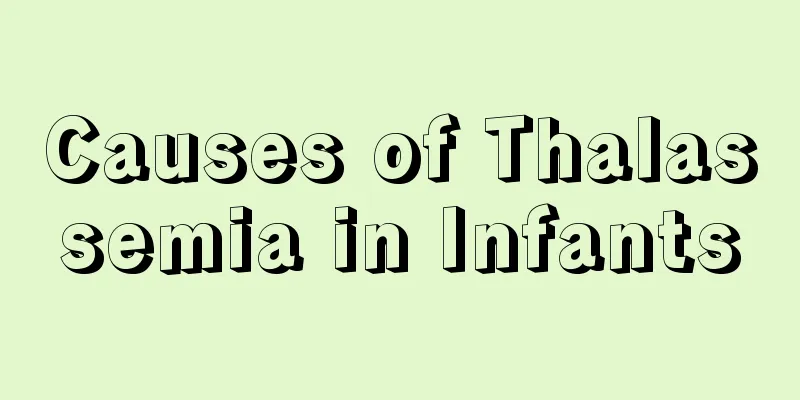Treatment of neonatal hypocalcemia

|
What are the treatments for neonatal hypocalcemia? I believe that many people do not know much about hypocalcemia. This is a common disease. When the disease occurs, the tendons and veins often twitch. When the tendons and veins twitch more severely, the patient's hands and feet will have severe convulsions, and even short-term breathing difficulties, fever all over the body, and even in the winter, the patient will sweat profusely. Hypocalcemia causes a lot of harm to patients, most of whom are the elderly and children. We all know that newborns have poor digestive function and often suffer from vitamin and calcium deficiencies. This can easily lead to hypocalcemia in patients. So if a newborn has hypocalcemia, how should it be treated? Convulsions and laryngeal spasms should be controlled immediately, and calcium should be supplemented to rapidly increase blood calcium. Vitamin D should be given at the same time. Breastfeeding should be emphasized or formula milk with a proper calcium-phosphorus ratio should be used. 1. For antispasmodic effect, diazepam 0.3 mg/kg can be injected intravenously or enema; phenobarbital 5-8 mg/kg can be injected intravenously 2. Calcium Supplement 1. Intravenous calcium supplementation: When convulsions or other obvious neuromuscular signs occur, 10% calcium gluconate (calcium gluconate) can be used. 2 ml/kg each time can be diluted with an equal amount of 5% to 10% glucose and then injected slowly intravenously (1 ml/min). If necessary, it can be given again after an interval of 6 to 8 hours. The total amount of elemental calcium is 25 to 35 mg/kg per day (10% calcium gluconate contains 9 mg/ml of elemental calcium). The maximum dose is 50 to 60 mg/kg per day. During the injection process, the heart rate should be maintained above 80 times/min, otherwise the injection should be stopped; and the drug should be prevented from overflowing outside the blood vessels and causing inflammation. 2. Oral calcium supplementation: After the seizure is controlled, oral calcium supplementation can be used. Calcium gluconate or calcium lactate 1g/d can be used until the blood calcium fluctuates within the normal range. For temporary or early hypocalcemia, oral calcium supplements can be taken for 2 to 4 weeks to maintain blood calcium at 2 to 2.3mmol/L (8.0 to 9.0mg/dl). For hypocalcemia without signs, a few scholars suggest that as long as the blood calcium is clearly low, that is, the total serum calcium in premature infants is <1.5mmol/L (6mg/dl) in full-term infants. Calcium therapy should be given only when the calcium level is <1.75mmol/L (7mg/dl) or the free calcium is <0.85mmol/L (3.4mg/dl). The dosage of oral or intravenous calcium gluconate is the same as before. 3. Magnesium supplementation. For those with hypomagnesemia, attention should be paid to magnesium supplementation because convulsions are difficult to control with calcium supplementation alone, and may even cause lower blood magnesium levels. At this time, the use of magnesium treatment can not only increase the blood magnesium concentration, but also restore blood calcium to normal. For those with hypomagnesemia, after calcium supplementation, intravenous drip of 2.5% magnesium sulfate (magnesium sulfate) 2-4 ml/kg or intramuscular injection of 25% magnesium sulfate 0.2-0.4 ml/kg can be added. It can be repeated after 8-12 hours. After convulsions are controlled, 10% magnesium sulfate 1-2 ml/kg can be given orally 2-3 times/d for a total of 5-7 days. High blood magnesium can cause respiratory depression. Muscle tone and tendon reflexes should be monitored during use. If there are signs of respiratory depression, 10% calcium gluconate 2 ml/kg should be given intravenously immediately. Excessive oral dose of magnesium sulfate can cause diarrhea, which should be of concern. In addition, premature infants and low birth weight infants should not be given intramuscular injections of magnesium salts to avoid multiple myasthenia. For patients with multiple hypocalcemia, give 10% calcium gluconate 1-2 ml/kg diluted with 5% glucose 1-2 times and drip slowly intravenously. For those with physical signs, give once every 8-12 hours. After the signs are controlled, change to once/d intravenous drip for 3 days. If the signs cannot be controlled within a short period of time, anesthesia and anticonvulsants should be used at the same time. Too fast intravenous drip of calcium can cause cardiac arrest and death. If the heart rate is <100 beats/min, the injection should be stopped. Overflow of calcium outside the blood vessels can cause structural damage. Concern about the incident: (1) Premature infants and low birth weight infants should not be given intramuscular injections of magnesium salts to avoid multiple myonecrosis and death. (2) During use, muscle tension and tendon reflexes should be monitored to prevent excessive blood magnesium (3) If hypermagnesemia occurs and respiratory depression occurs, immediately give 10% calcium gluconate 2 ml/kg intravenously (4) Oral administration of excessive amounts of magnesium sulfate can cause diarrhea 4. Vitamin D treatment: For patients with parathyroid insufficiency, in addition to calcium supplementation, oral vitamin D3 10,000 to 20,000 U/d is suitable. The course of treatment takes several months. For patients with congenital parathyroid insufficiency, calcium and vitamin D3 need to be taken temporarily. When hypocalcemia is accompanied by hypomagnesemia, convulsions are difficult to control with calcium supplementation alone, and may even cause blood magnesium to drop even lower. Magnesium supplementation should be given at the same time. The above is the treatment method for neonatal hypocalcemia. We hope that through our introduction, everyone can have a comprehensive understanding of hypocalcemia. Although when people around you show such symptoms, on the one hand, you should go to the hospital in time to find out the cause, and on the other hand, you should take the right medicine for timely treatment, such as taking some calcium tablets or calcium supplements. Another thing is to feed your child more high-calcium milk and supplementary food. This multi-pronged approach can cure the disease. |
<<: Dietary taboos for children with ADHD
>>: What’s going on when my baby has red spots on his chest and back?
Recommend
What's wrong with the child's blue eyes?
Parents may sometimes notice that their children&...
Methods of acupuncture points massage for children with colds
Children's colds are a problem we often encou...
How much milk should a 2 and a half month old baby take?
Newly born babies need careful care from their pa...
Will motor developmental delay affect intelligence?
Maybe many of our children are prone to motor dev...
Is it good for children to drink milk at night?
Milk contains a lot of nutrients, especially for ...
What ointment should be used for newborn eczema
Eczema is a particularly common disease in newbor...
How long does it take for a newborn to open his eyes?
In our lives, many newborn babies do not open the...
What is the situation of baby's hair sweating easily?
Some mothers of babies see that their baby's ...
What is the cause of blood in the urine of children?
When a child has physical problems, parents shoul...
How to treat a child's knee abrasion
In life, many parents are worried about their chi...
What medicine should be used for girls' vulvar itching
Girls have shorter urethras, and if they do not p...
White discharge from the baby's vagina
Parents with babies at home must take good care o...
Causes of autism in children
Children are the flowers of the motherland and th...
Eight month old baby has fever
When taking care of a baby of a few months old, p...
Is ischemia and hypoxia common in newborns?
We all know that when a newborn is born, the hosp...









